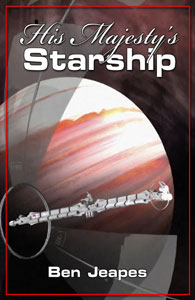Aides
An essential item for anyone is the aide, a word which both describes what the thing does and which is short for “artificial intelligence device”. Aides are personal computers, organisers and communicators all wrapped into one handy package. They come in all shapes and sizes but are generally of a size and weight convenient for clipping to one’s belt or putting in one’s pocket. Most have a holographic display; interfacing can be done verbally or by keyboard. All aides contain a basic AI which can understand the nuances of human speech and exert a modicum of initiative: an aide won’t tell you some software has performed an illegal function, or that it can’t find the network — it will do something about the problem first.
Artificial intelligence (AI)
AIs grew out of neural network research in the early twenty first century, and have been around ever since, because (a) they are useful and (b) the high-level sort have legal protection.
At the bottom of the ladder are the semi-sentient AIs, each of which is dedicated to one job and whose idea of happiness is to while away their existence on one trivial task. Above them are the sentients, such as those found in every aide or which control key systems like Comms on a ship. They are self-aware in a vague sort of way and able to hold a conversation, within limits, but they are also kept on a rein. It’s enough that an aide can understand typical loose, muddled human conversation and answer you when you speak, but to have it answer you back would be too much and even possibly dangerous.
Therefore, at the top of the ladder, are the high-level sentients. These are the closest thing the electronic world has to human minds; all-rounders, able to apply themselves to a number of tasks. Able to argue and contradict and form their own characters and opinions. Legally almost the same as human beings, with very similar rights and privileges and obligations to one another. And all sorts of additional software can be squirrelled away in their code, sometimes without them realising it.
In His Majesty’s Starship, we learn that this can also cause problems … but that isn’t news to the characters. The Commonwealth of The Xenocide Mission has little time for them and rarely has anything higher than a semi-sentient on any of its ships.
Energy
Human society is traditionally powered by nuclear fusion. It was the need for fusion fuel that drove the initial colonization of the moon in the twenty first century — the surface of the moon is rich in particles of the helium isotope 3He from the sun.
Nuclear fusion, however, is nowhere near powerful enough to power the Rustie spacecraft, with their manipulation of gravity fields and wormholes. Rustie ships are powered by vacuum energy, a handy by-product of quantum theory which states that particles are constantly popping into and out of existence in a vacuum. The theory has been known to human scientists since the twentieth century: the Roving’s scientists were able to make it work. The Commonwealth has since made the technology available to Earth’s nations but most of them still rely on fusion.
Gravity
Humans have not yet learnt to manipulate gravity fields, and their ships produce the illusion of gravity through two classical methods: spin, or acceleration.
Most human ships have at least a spinning compartment (like Ark Royal); larger ships spin their entire bodies. Objects on the inside surface of the spinning area feel the illusion of gravity through inertia, holding them to the surface. On a planet, of course, this wouldn’t work as you would be under two conflicting forces: your natural attraction to the centre of the planet and the force holding you to the floor. The result would be very uncomfortable. However, as a spaceship is in free-fall and everything within it it already falling in the same direction at the same speed, the only force one feels is the centrifugal one.
Even this doesn’t work when the ship is accelerating or decelerating. Again, inertia plays its part. When a ship accelerates, inertia presses you against the deck. When the ship decelerates it first turns round so that it is heading backwards towards its destination, and again inertia works its magic. As this force and the force of a centrifugal compartment are at right angles to each other, ships stop spinning before firing their main engine, and all internal fixtures are configured to rotate by 90 degrees.
Rustie ships can manipulate the forces of the universe to produce gravity upon demand. The chance of getting hold of technology like this is one reason why the human nations agree to go on the delegation.
Propulsion
At the start of His Majesty’s Starship, any deep-space-capable human ship will have three kinds of propulsion: hydrazine-based thrusters, for basic manoeuvring; more powerful chemical rockets (“the secondaries”, “the auxiliaries”) for getting underway; and at least one fusion-pulse engine (“the main engine”, “the primary engine”) for decent speed. The secondaries are needed for getting the ship away from planets, space stations, other ships and so on for a very good reason: under fusion boost, a ship is literally riding a wave of nuclear explosions. Ships carry fuel in the form of deuterium, an isotope of hydrogen, and the nuclei are fused by powerful and precisely aligned lasers in the ship’s stern.
It is only when a ship is under fusion boost that any meaningful sensation of gravity is produced on board.
In principle, this could (and does) lead to the ability to cover astronomical distances in relatively short spaces of time. For instance, just boosting for 1 hour at 1 gee will get you across one quarter of an AU — in other words, one quarter of the distance between the Earth and the sun. One month’s boost will take you half a lightyear, so logically, you could reach the nearest star in less than a year.
Practicalities get in the way, of course. No ship is large enough to carry enough fuel for such a sustained boost; and even if it did, you could certainly reach your target in the given time but you would also overshoot it at a rapid lick. Ships need to slow down as well as speed up. The laws of physics would also get in the way; the closer you get to the speed of light, the more fuel you need to accelerate you just that little bit more. This all means that, while humans can now get across the furthest reaches of their solar system in a couple of months, that is still as far as they have got by 2149.
Rustie ships, and Commonwealth ships in The Xenocide Mission, use far more esoteric means of getting from A to B. They too will use thrusters for elementary manoeuvring but otherwise will manipulate gravity fields, increasing their attraction here, decreasing it there. Still that isn’t enough to get them between stars either: for that, they rely on what they call step-through.
XC ships at the start of The Xenocide Mission are at a stage not dissimilar to Earth ships before contact with the Rusties.
Step-through
Step-through is the means by which one may travel faster-than-light. The principles have been known to human scientists since the twentieth century — it follows on naturally from the theory of quantum gravity. Humans would call a step-through point a “wormhole”, but as the technique was developed by scientists on the Roving, not Earth, their original terminology is still used.
Step-through does have its limitations. The opening and closing of a step-through point is accompanied by bursts of exotic particles, which means covert surveillance of a race sufficiently advanced to detect those particles must be undertaken carefully. Also, although it means that the distances between solar systems can be traversed quickly, those solar systems themselves must be traversed once you get there. In His Majesty’s Starship, The delegation fleet travels for a fortnight across Earth’s system to reach the step-through point to the Roving; it passes into Roving space in an instant; and then travels for another fortnight to reach Roving orbit. Like, the Commonwealth ship Pathfinder takes almost a week to reach SkySpy in The Xenocide Mission because of the amount of normal space that must first be traversed.
Weapons
- Beam weapons
- Torpedoes
- Lasers
Three types of weapons are available to ships in His Majesty’s Starship.
All deep-space ships carry lasers as defence against space particles: at the speeds obtainable using fusion drives, even a glancing blow with a tiny speck of space junk can be devastating. Once you have these lasers, of course, it is a simple matter to upgrade them to actively hostile weaponry.
Ship torpedoes are just being developed as His Majesty’s Starship opens: Gilmore has heard of them but never seen one. The problem with torpedoes is that their effectiveness is limited in space. A torpedo fired from an ocean-going ship will do most of its damage by the shockwaves transmitted through the water: no such luck in a vacuum. Space torpedoes tend to come in two sorts, therefore: nuclear warheads, which rely on the sheer heat of their explosion and the radiation they produce to cause damage, and “grapeshot”. A torpedo which disintegrates into a cluster of smaller objects in the path of a ship coming towards it at speed will cause harm, and there may be too many of those objects for the ship’s lasers to cope with.
Torpedoes can be further subdivided under these two main headings. Most can manoeuvre, for instance, under the guidance of a low-level AI: the laws of physics prevent them from deviating from their main course, but thrusters can make them move up and down and from side to side in an effort to confuse a defence system. Other torpedoes will disintegrate into chaff to confuse a defence system: they can break down into several bits, all heading towards the target, but not all necessarily being the bit that does any damage.
Once again, the Rusties outclass these basic human means of aggression. They don’t go into precise details, but it becomes clear they have beam weapons that can take a human ship apart at a considerable distance in a couple of seconds. By the time of The Xenocide Mission, so do the humans.

